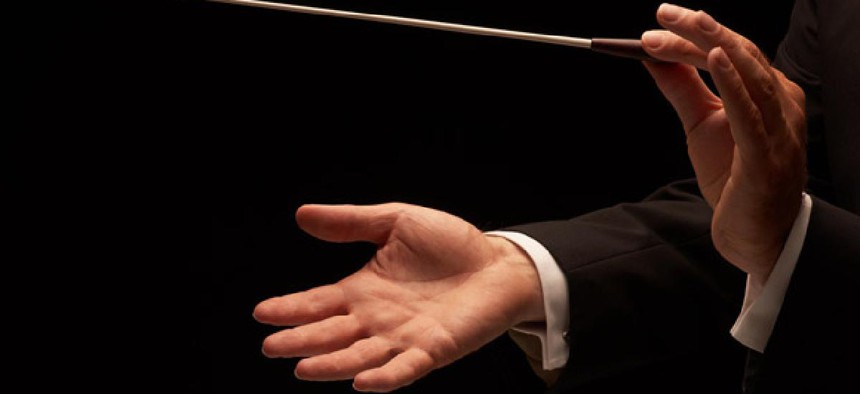
18percentgrey/Shutterstock.com
Learning from Superstar Conductors
The job of a conductor is much different today than it was 20 or 30 years ago.
Way back in the day, I was a part-time announcer for my college radio station, WDAV. My favorite shift was the late night show, Flipsides, but I spent many a Sunday afternoon spinning the primary staple of the station, classical music. That was when I learned the names of many of the great conductors of the 20th century such as Herbert von Karajan and Sir Neville Mariner and the Academy of St. Martin in the Fields. (Read that last line aloud in your best dulcet FM radio announcer voice.)
All of those memories came back this week when I read an article in The Financial Times called The Modern Maestro. The article made the point that the job of a conductor is much different today than it was 20 or 30 years ago. Back then, the big conductors had exclusive contracts with record companies and became millionaires. They could call all the shots and be the aloof, mysterious leader.
Like so many other things, digitization has changed and democratized the classical music industry. Today, the conductor has to collaborate and serve the players (something that James Levine gets), schmooze the fundraising base, tell stories that connect with the audience and represent the orchestra to the community at large. The poster boy of this approach in the FT article is the 31-year-old music director of the L.A. Philharmonic, Gustavo Dudamel.
Dudamel seemingly has it all — talent, charisma, looks, and let’s not forget, youth. After reading the FT article, you might come away thinking that 20 and 30 somethings are the only ones who can lead in this new, collaborative way. I beg to differ.
If you break down the elements of effective collaborative leadership in any industry, I think you’ll find some common characteristics that are not generation-specific. Here are three I see right off the bat:
- Respect for the Talent of Others. Today’s best conductors show us how to use a mix of leadership styles that show respect for the talent of others. It’s not just command and control. That has its moments, but they also use coaching, democratic, affiliative and visionary leadership.
- Storytelling Chops. The classical audiences of today are often less knowledgeable than their counterparts of 100 years ago. To address this difference, conductors, like all good leaders, need to be expert story tellers. The music, or any other message, is much more powerful when the context is established.
- The Ability to Work With Lots of Different Stakeholders. Leading an orchestra these days is much more complex than just leading the musicians. Donors, community leaders, marketers and many other stakeholders factor into the conductor’s leadership portfolio. The same is true, of course, with any leader who has to work in a matrixed environment.
What other leadership lessons are there to learn from conductors or other leaders in the arts?







